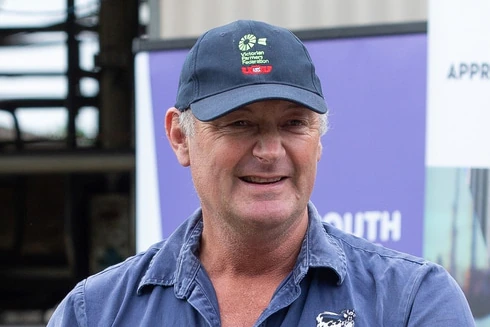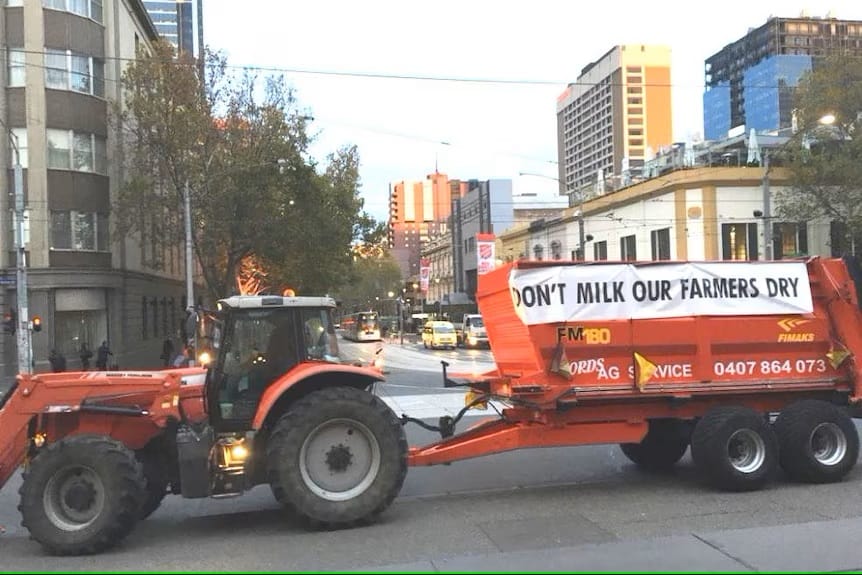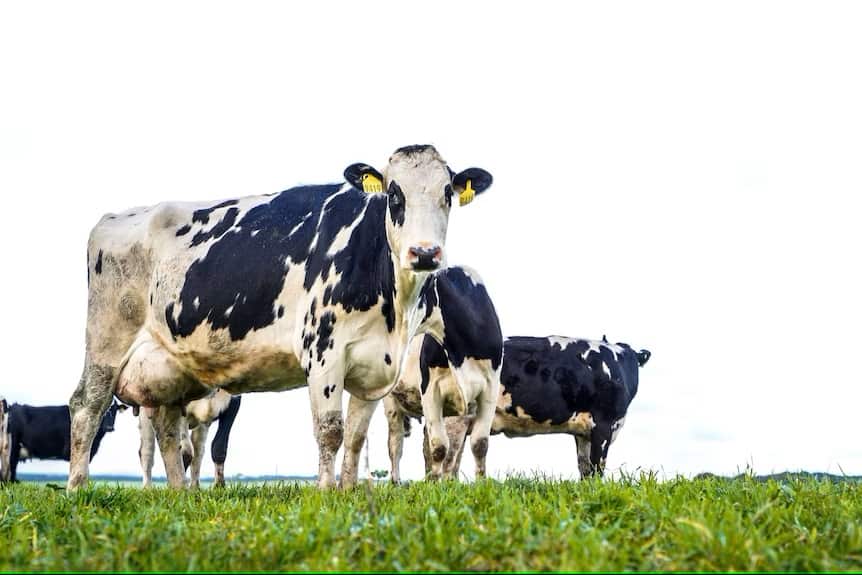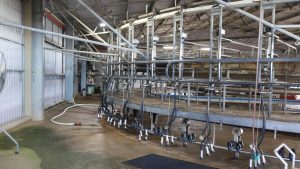
Dairy farmers who were part of a class action over slashed milk payments, which sparked the 2016 dairy crisis, estimate they will get about 10 per cent of what they lost.
Key points:
Dairy farmers found out this week they will get about $13 million from Fonterra class action
The class action was settled last year with the milk company agreeing to pay $25 million
The class action was over 2016 clawback payments, sparking an industry crisis
It comes on an important day for the almost $5 billion industry, with all milk processors required to release farm gate milk prices today.
In November, New Zealand dairy cooperative Fonterra agreed to pay $25 million to settle the class action filed with the Victorian Supreme Court.
About 350 farmers were part of the action after the company retrospectively cut its milk price in 2016, known as clawbacks.
At the time, farmers contracted to supply local cooperative Murray Goulburn, and Fonterra had to pay back some of their milk cheques to the processors.
Some dairy producers were forced to take out loans to fund this, many struggled, some left the industry, and there were protests against both Fonterra and Murray Goulburn.
Farmers pocket half of class action payment
Farmers who were part of the Fonterra class action received payout details from lawyers this week.

Colac farmer and United Dairy Farmers president Mark Billing was an applicant in the case.
He said producers would get $13 million or 52 per cent of the total $25 million payout, which for him was about 10 cents for every dollar he says he lost.
Mr Billing told the Victorian Country Hour the other money was for lawyers and to repay third-party litigation funders.
And the payout to his business was much lower than he’d hoped, about 10 per cent of what he estimates he lost.
“It’s not a number that we really wanted,” he said.
Reopening old wounds

Mr Billing said former Fonterra suppliers had told him while the finances were now settled, it was “reopening all the old wounds”.
And its fallout is affecting the current industry, which is facing a falling domestic milk pool despite a record-high milk price last season.
“The step down at the time had a massive effect on the industry, and I think we’re still seeing effects of it today,” Mr Billing said.
“The size of the milk pool [has] been affected by the decisions that were made by a couple of processes back in 2016.”
He said his “heart goes out” to dairy farmers forced out of the industry from the financial stress of this time.
“The effects on families was profound,” Mr Billing said.
“There’s people out there that probably say, ‘Well, just move on. Get on with it’.
‘[But] … this will always hang over them and will affect them for all their days.”
Payout welcome after ‘upsetting time’
Toora farmer Wendy Whelan in Melbourne’s south-east, milks 390 cows and, in 2016, was a Fonterra supplier.
She said it took years to pay off the debt she then owed the company after they were able to clawback her income.

Ms Whelan said finding out about the mid-season price cut was “an upsetting time”.
“I remember getting the text and then getting the cows in that night, working out how much money I was losing by milking them,” she said.
“I’d only just started sharefarming, and it was a pretty hard hit on my business.”
Ms Whelan said she was just happy to get any payment at all from the class action.
“I was actually quite pleased Fonterra has to pay something to us,” she said.
“I never thought the amount would be great because it’s been seven years, and that’s a lot of lawyers’ time and money.
“I still can’t understand how they got away with doing it.”
A Fonterra spokesperson says the company is “pleased the class action has now been settled so that farmers, the dairy industry and our business can now move forward.”
“We are proud of the good relationships we have today with our farmers and the wider industry and will continue to look at ways we can invest in the future of Australian dairy,” the spokesperson said.

Dairy crisis forces industry reform
Today is important one for the dairy industry as by 2pm on June 1, dairy companies must release their minimum milk price for the season ahead.
This is part of the mandatory dairy code of conduct introduced after the dairy crisis, which bans retrospective milk price cuts.
It forces milk processing companies to publish prices for the year ahead to give some certainty to farmers.
“We needed as an industry to make the playing fields more level. The code does that,” Mr Billing said.
“It enables dairy farmers to start their budgeting and their planning for the next financial year.”
Ms Whelan said a big difference in the seven years since 2016 was that farmers’ “loyalty toward factories” had changed, and producers now sought the best deal.
“People are shopping around like they should to get a better price and find a company who looks after them,” she said.
























